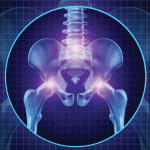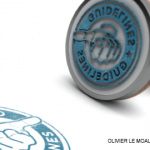 The practice of medicine often involves a delicate balance: being sure not to underdiagnose or undertreat disease while avoiding low-value care that may harm patients, waste resources and overtax our already overburdened healthcare system. Rachelle Buchbinder, AO, MBBS (Hons), MSc, PhD, FRACP, FAHMS, head of the Musculoskeletal Health & Sustainable Health Care Units, School of Public Health & Preventive Medicine, Monash University, Malvern, Victoria, Australia, has focused her research and advocacy work on these subjects.
The practice of medicine often involves a delicate balance: being sure not to underdiagnose or undertreat disease while avoiding low-value care that may harm patients, waste resources and overtax our already overburdened healthcare system. Rachelle Buchbinder, AO, MBBS (Hons), MSc, PhD, FRACP, FAHMS, head of the Musculoskeletal Health & Sustainable Health Care Units, School of Public Health & Preventive Medicine, Monash University, Malvern, Victoria, Australia, has focused her research and advocacy work on these subjects.
Dr. Buchbinder is a practicing rheumatologist and serves as the coordinating editor for the Cochrane Musculoskeletal Back and Neck Group. She is the chair of the National Health and Medical Research Council (NHMRC) Australia and New Zealand Musculoskeletal (ANZMUSC) Clinical Trials Network Centre of Research Excellence. She also coauthored Hippocrasy: How Doctors Are Betraying Their Oath with Ian Harris, AM, MBBS, MMed (Clin Epi), MSc (Hlth Data Sc), PhD, professor of orthopedic surgery, University of New South Wales, Sydney.
The Rheumatologist (TR) interviewed Dr. Buchbinder on her research and its future implications for the practice of rheumatology.
TR: How did you first become interested in the topics of misdiagnosis, overdiagnosis and reducing waste in medicine?
Dr. Buchbinder: Let me first note that misdiagnosis is a wrong diagnosis, whereas overdiagnosis is a technically correct diagnosis that does not result in any benefit to the patient. My interest is in overmedicalization, overdiagnosis, overtreatment and, more broadly, low-value care and waste in medicine. My passion for these topics stems from what I have seen in everyday rheumatology practice. Much of the problem originates from a lack of science literacy (e.g., clinical epidemiology) and a tendency to overestimate the benefits and underestimate the harms of what we do. For example, [estimates indicate] about a third of medical care is of no benefit and another 10% is harmful.1
The other way I came to this area was by performing randomized controlled trials of treatments that were already in routine care but hadn’t been properly evaluated, as well as systematic reviews for common treatments. I thought—naively—that I would be proving that many of these treatments worked. I was surprised to learn [that] in many instances they did not. This list of treatments includes vertebroplasty for osteoporotic spinal fractures, shock wave therapy for heel and elbow pain, subacromial decompression for shoulder pain and medicinal cannabis for chronic pain, to name a few.2-6
Fundamentally, many things contribute to the problem. At a systems level, the issue is that medical care is based on a business model that doesn’t fit with improving health; rather, it prioritizes the giving of care over health. We often are treating, rather than preventing, illness. There are many perverse incentives that reinforce wrong care and discourage the right type of care from being given. New tests and treatments are introduced into practice before being properly evaluated. Technological advances have increased sensitivity of imaging [so it] can detect miniscule findings, which may substantially increase the risk of overdiagnosis. In addition, the media has a tendency to focus on miracle cures and to fall prey to hype. Patients often have expectations that may be exaggerated compared to what we can actually deliver.
TR: Across medicine as a whole, which areas are most ripe for improvement with regard to these topics?
Dr. Buchbinder: I can start by explaining some of the ways that overdiagnosis—often leading to overtreatment—may take place. Remember, overdiagnosis occurs when someone is given a diagnosis that’s technically correct but won’t benefit them and might cause harm. Recently, we have been interested in identifying ways of detecting and quantifying overdiagnosis.7,8
Healthy people are often screened for disease, as with cancer screening. We know that a proportion of cancers identified by screening are overdiagnoses, including common ones like breast and prostate cancer. In rheumatology, overdiagnosis occurs mainly when people with minor symptoms are investigated unnecessarily and an abnormality is falsely assumed to be the cause of these symptoms (e.g., a meniscal tear in the knee).
Overdiagnosis may also occur when a disease definition is expanded, such as the change in the definition of gestational diabetes that resulted in many more pregnant women receiving the diagnosis and having more testing and treatment—without a change in outcomes for either mother or baby.9 Overdiagnosis can also arise when risk factors for a disease are labeled as diseases in their own right (e.g., osteopenia) or when a new disease is created (e.g., sarcopenia, which now has its own ICD code). Risk factors, such as osteopenia and sarcopenia—which are part of the aging process—are okay to recognize and try to reduce with increased physical activity; the problem is when this provides a wide market for new therapies. In many of the above examples, there is good intent, but not enough consideration of unintended consequences.
TR: Within rheumatology, specifically, how do these topics manifest in clinical practice?
Dr. Buchbinder: Rheumatologists routinely do very good work in the diagnosis and management of [such] conditions [as] inflammatory arthritis. Much of my work has focused on low-value care related to regional musculoskeletal conditions.
Some of the problems arise due to overtesting. One example is unnecessary imaging, which occurs for many musculoskeletal complaints, including pain in the back, shoulders, neck and knees. Abnormalities that actually may be normal for a patient’s age are detected, and it is then incorrectly assumed that these abnormalities are the cause of the problem. This leads to a cascade of overtreatment. In fact, even having a label or diagnosis (e.g., meniscal tear) can be harmful, such as by causing unnecessary anxiety.
We also have a tendency to overestimate benefit and underestimate harm, which is a common propensity among people in general. Doctors need to be aware of this bent. Beyond this, clinicians sometimes don’t understand the evidence. They may lack clinical epidemiology knowledge and crucial skills. When they don’t understand the evidence, they will be more accepting of evidence that supports their beliefs (i.e., confirmation bias) and will be too easily misled by, or susceptible to, unsupported claims. Physicians also tend to want to help patients by doing something, rather than just waiting.
TR: Can you discuss some of your work in reducing low-value care for low back pain around the world?
Dr. Buchbinder: My very first large project when I returned to Australia was an evaluation of a mass media campaign for low back pain that was being planned by the state of Victoria’s workers’ compensation authority because of a huge rise in the cost of workers’ compensation for back pain in the preceding decade. The campaign was based on the provision of very simple messages: if you have back pain, stay active, self-manage, avoid unnecessary imaging and you can stay at work. The campaign was hugely successful in altering the beliefs of doctors and patients, and it also changed management and reduced costs significantly. It remains one of the most effective ways of addressing misconceptions about back pain and has been replicated around the world.10,11
Back pain is really just a part of everyday life, like the common cold, but the problem is that it has been overmedicalized, overinvestigated and overtreated. There are no easy ways of addressing this problem, and it needs a systems approach. My colleagues and I proposed to The Lancet a series about low back pain that would outline the problem and include a call to action to address it worldwide. The three-part series was published in 2018 and generated huge media attention; it also attracted notice from policymakers worldwide (as one example of reach, each of the three papers has been cited more than a thousand times).12-14 One outcome was that the World Health Organization (WHO) developed guidelines for the management of back pain that were released in December 2023, and some of the authors of the series—including me—were involved in their development.15
TR: How can individual rheumatologists think about these topics in their daily practice and help reduce the problems of misdiagnosis, overdiagnosis and waste in medicine?
Dr. Buchbinder: I think we all need to have clinical epidemiology skills so we can decipher the evidence for ourselves. When I trained in Canada, an introduction to clinical epidemiology course was offered to all fellows starting training in their various specialties; I think that such courses should be mandatory for all trainees because it is a fundamental, core subject area. We should all think critically about what items in our own practices may constitute low-value care. For example, think of the clinician-led Choosing Wisely campaign that encourages us to identify five things in our scope of practice that we should stop doing.16 When in the clinic with our patients, we should be asking ourselves the same questions that patients should be asking of us when we recommend a test, treatment or procedure. These include:
- What are the benefits?
- What are the harms?
- What would happen if I did nothing or waited?
- What are the alternatives?
- What does the evidence say?
- What are my outcomes?
Only by asking these questions each and every day can we improve the care that we provide to patients.
Jason Liebowitz, MD, is an assistant professor of medicine in the Division of Rheumatology, Columbia University Vagelos College of Physicians and Surgeons, New York.
References
- Braithwaite J, Glasziou P, Westbrook J. The three numbers you need to know about healthcare: The 60-30-10 challenge. BMC Med. 2020;18(1):102.
- Buchbinder R, Osborne RH, Ebeling PR, et al. A randomized trial of vertebroplasty for painful osteoporotic vertebral fractures. New Engl J Med. 2009 Aug 6;361(6);557–568.
- Buchbinder R, Ptasznik R, Gordon J, et al. Ultrasound-guided extracorporeal shock wave therapy for plantar fasciitis: A randomized controlled trial. JAMA. 2002 Sep 18;288(11):1364–1372.
- Staples M, Forbes A, Ptasznik R, et al. A randomized controlled trial of extracorporeal shock wave therapy for lateral epicondylitis (tennis elbow). J Rheumatol. 2008 Oct;35(10):2038–2046.
- Karjalainen TV, Jain NB, Page CM, et al. Subacromial decompression surgery for rotator cuff disease. Cochrane Database Syst Rev. 2019 Jan 17;1(1):CD005619.
- Wang L, Hong PJ, May C, et al. Medical cannabis or cannabinoids for chronic non-cancer and cancer related pain: A systematic review and meta-analysis of randomised clinical trials. BMJ. 2021 Sep 8;374:n1034.
- Bell K, Doust J, Sanders S, et al. A novel methodological framework was described for detecting and quantifying overdiagnosis. J Clin Epidemiol. 2022 Aug:148:146–159.
- Sanders S, Barratt A, Buchbinder R, et al. Evidence for overdiagnosis in noncancer conditions was assessed: A metaepidemiological study using the ‘fair umpire’ framework. J Clin Epidemiol. 2024 Jan;165:111215.
- Glasziou P, Doust, J. 1 in 6 women are diagnosed with gestational diabetes. But this diagnosis may not benefit them or their babies. The Conversation. 2023 Aug 14. https://theconversation.com/1-in-6-women-are-diagnosed-with-gestational-diabetes-but-this-diagnosis-may-not-benefit-them-or-their-babies-205919.
- Buchbinder R, Jolley D, Wyatt M. Population based intervention to change back pain beliefs and disability: Three part evaluation. BMJ. 2001 Jun 23;322(7301):1516–1520.
- Buchbinder R, Jolley D, Wyatt M. 2001 Volvo award winner in clinical studies: Effects of a media campaign on back pain beliefs and its potential influence on management of low back pain in general practice. Spine (Phila Pa 1976). 2001 Dec 1;26(23):2535–2542.
- Buchbinder R, et al. Low back pain (series). Lancet. https://www.thelancet.com/series/low-back-pain.
- Foster NE, Anema JR, Cherkin D, et al. Prevention and treatment of low back pain: Evidence, challenges, and promising directions. Lancet. 2018 Jun 9;391(10137):2368–2383.
- Buchbinder R, van Tulder M, Öberg B, et al. Low back pain: A call for action.Lancet. 2018 Jun 9;391(10137):2384–2388.
- WHO releases guidelines on chronic low back pain. World Health Organization. 2023 Dec 7. https://www.who.int/news/item/07-12-2023-who-releases-guidelines-on-chronic-low-back-pain.
- Morrisroe K, Nakayama A, Soon J, et al. EVOLVE: The Australian Rheumatology Association’s ‘top five’ list of investigations and interventions doctors and patients should question. Intern Med J. 2018 Feb;48(2):135–143.


